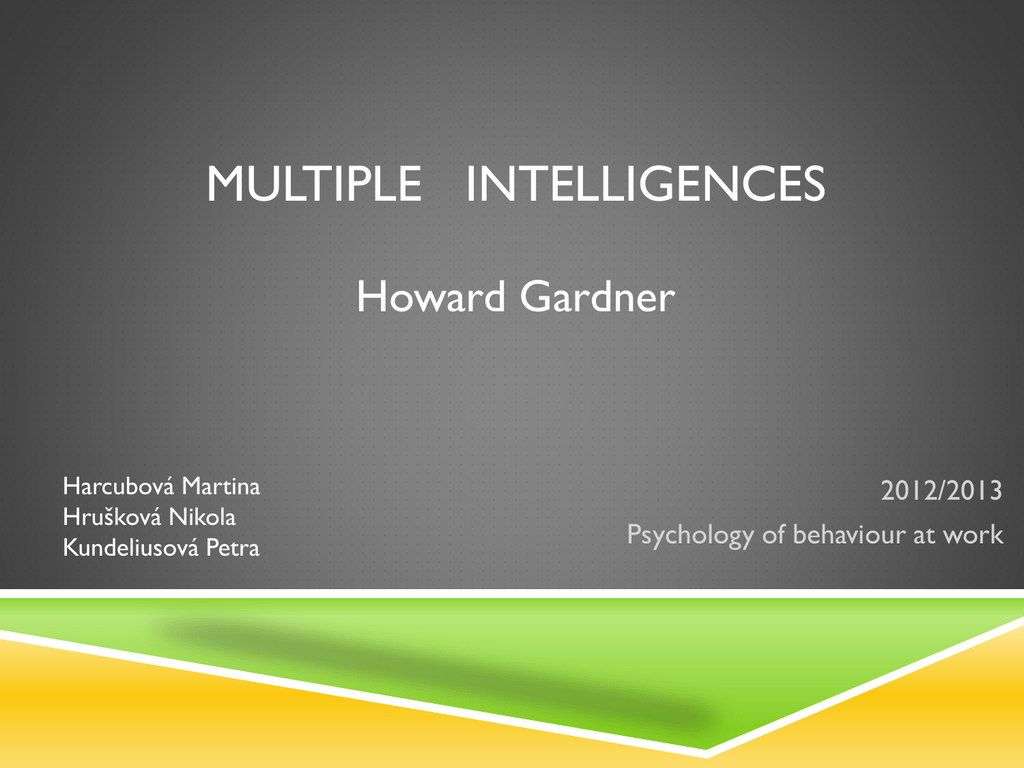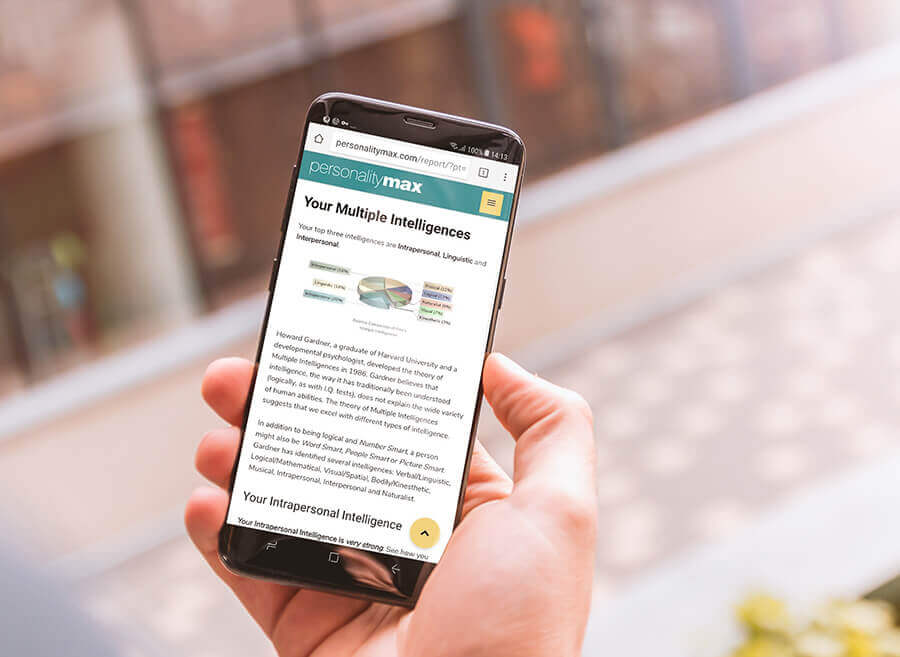- Printable Multiple Intelligence Test
- Gardner's Multiple Intelligences
- Howard Gardner Multiple Intelligence Test
Gardner's Multiple IntelligencesMultiple IntelligencesHoward Gardner of Harvard has identifiedseven distinct intelligences. This theory has emerged from recentcognitive research and 'documents the extent to which studentspossess different kinds of minds and therefore learn, remember,perform, and understand in different ways,' according toGardner (1991). Did not load driver ndproxy.sys. According to thistheory, 'we are all able to know the world through language,logical-mathematical analysis, spatial representation, musicalthinking, the use of the body to solve problems or to make things,an understanding of other individuals, and an understanding ofourselves. Where individuals differ is in the strength of theseintelligences - the so-called profile of intelligences -and inthe ways in which such intelligences are invoked and combinedto carry out different tasks, solve diverse problems, and progressin various domains.' Gardner says that these differences 'challengean educational system that assumes that everyone can learn thesame materials in the same way and that a uniform, universalmeasure suffices to test student learning. Indeed, as currentlyconstituted, our educational system is heavily biased towardlinguistic modes of instruction and assessment and, to a somewhatlesser degree, toward logical-quantitative modes as well.'
Gardner argues that 'a contrasting set of assumptions ismore likely to be educationally effective. Students learn inways that are identifiably distinctive. The broad spectrum ofstudents - and perhaps the society as a whole - would be betterserved if disciplines could be presented in a numbers of waysand learning could be assessed through a variety of means.' The learning styles are as follows:Visual-Spatial- think in terms of physical space, as do architects and sailors.Very aware of their environments. They like to draw, do jigsawpuzzles, read maps, daydream. They can be taught through drawings,verbal and physical imagery.

Tools include models, graphics,charts, photographs, drawings, 3-D modeling, video, videoconferencing,television, multimedia, texts with pictures/charts/graphs.Bodily-kinesthetic- use the body effectively, like a dancer or a surgeon. Keensense of body awareness.
Printable Multiple Intelligence Test
They like movement, making things, touching.They communicate well through body language and be taught throughphysical activity, hands-on learning, acting out, role playing.Tools include equipment and real objects.Musical- show sensitivity to rhythm and sound. They love music, butthey are also sensitive to sounds in their environments. Theymay study better with music in the background. They can be taughtby turning lessons into lyrics, speaking rhythmically, tappingout time. Tools include musical instruments, music, radio, stereo,CD-ROM, multimedia.Interpersonal- understanding, interacting with others. These students learnthrough interaction. They have many friends, empathy for others,street smarts.
They can be taught through group activities, seminars,dialogues. Tools include the telephone, audio conferencing, timeand attention from the instructor, video conferencing, writing,computer conferencing, E-mail.Intrapersonal- understanding one's own interests, goals. These learners tendto shy away from others. They're in tune with their inner feelings;they have wisdom, intuition and motivation, as well as a strongwill, confidence and opinions. They can be taught through independentstudy and introspection. Tools include books, creative materials,diaries, privacy and time.
They are the most independent of thelearners.Linguistic- using words effectively. These learners have highly developedauditory skills and often think in words. They like reading,playing word games, making up poetry or stories. They can betaught by encouraging them to say and see words, read books together.Tools include computers, games, multimedia, books, tape recorders,and lecture.Logical -Mathematical - reasoning, calculating. Think conceptually,abstractly and are able to see and explore patterns and relationships.They like to experiment, solve puzzles, ask cosmic questions.They can be taught through logic games, investigations, mysteries.They need to learn and form concepts before they can deal withdetails.At first, it may seem impossible to teachto all learning styles. However, as we move into using a mixof media or multimedia, it becomes easier.
As we understand learningstyles, it becomes apparent why multimedia appeals to learnersand why a mix of media is more effective. It satisfies the manytypes of learning preferences that one person may embody or thata class embodies. A review of the literature shows that a varietyof decisions must be made when choosing media that is appropriateto learning style.Visuals:Visual media help students acquire concrete concepts, such asobject identification, spatial relationship, or motor skillswhere words alone are inefficient.Printed words: There is disagreement about audio's superiorityto print for affective objectives; several models do not recommendverbal sound if it is not part of the task to be learned.Sound:A distinction is drawn between verbal sound and non-verbal soundsuch as music. Sound media are necessary to present a stimulusfor recall or sound recognition.
Gardner's Multiple Intelligences


Audio narration is recommendedfor poor readers.Motion:Models force decisions among still, limited movement, and fullmovement visuals. Motion is used to depict human performanceso that learners can copy the movement.
Howard Gardner Multiple Intelligence Test
Several models assertthat motion may be unnecessary and provides decision aid questionsbased upon objectives. Visual media which portray motion arebest to show psychomotor or cognitive domain expectations byshowing the skill as a model against which students can measuretheir performance.Color:Decisions on color display are required if an object's coloris relevant to what is being learned.Realia:Realia are tangible, real objects which are not models and areuseful to teach motor and cognitive skills involving unfamiliarobjects. Realia are appropriate for use with individuals or groupsand may be situation based. Realia may be used to present informationrealistically but it may be equally important that the presentationcorresponds with the way learner's represent information internally.Instructional Setting: Design should cover whether the materials areto be used in a home or instructional setting and consider thesize what is to be learned. Print instruction should be deliveredin an individualized mode which allows the learner to set thelearning pace.